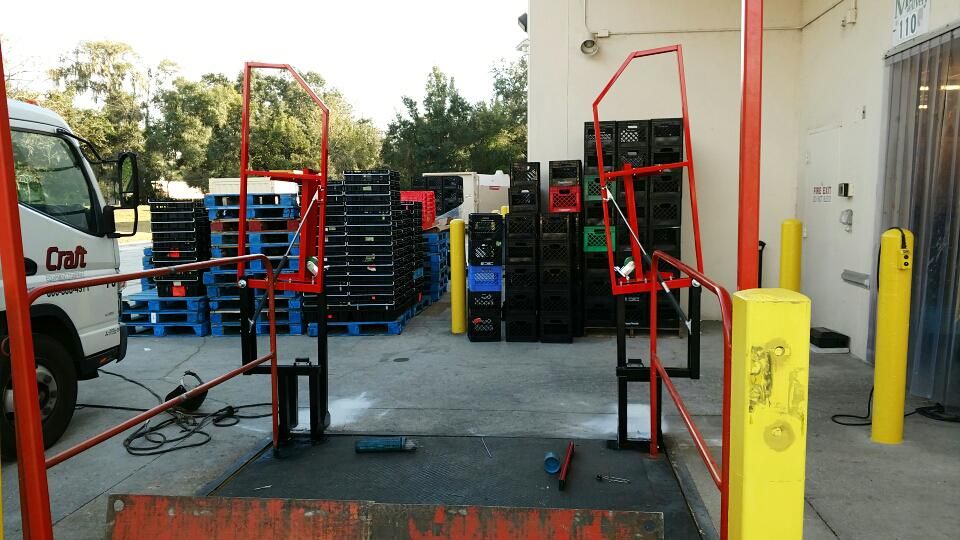
Making Loading Dock Operations Safer in Grocery Facilities
For regional grocery store chains, the last mile in logistics often ends at an individual store. Trucks use one access road, usually located behind the store, while consumers park and enter the store on the opposite side. With the tremendous consumer demand for foodstuffs of all kinds as consumers continue to cook and eat more meals at home. This demand often translates to an extraordinarily busy loading dock - an area that was already busy receiving goods before the pandemic, with employees bringing pallets into the stores for either immediate storage or restocking of shelves.
The increased activity in the loading dock proposes many challenges and potential safety hazards. Not only do loading dock employees work amongst the trucks, they also often ride lifts from the ground level to trucks to manually move the pallets of goods. For example, refrigerated trucks usually have a higher bed height than a semi or straight truck, which normally align with loading dock heights, so dock lifts can be used to move pallets from the taller refrigerated trucks to ground level before they enter the store.
For fall protection, OSHA’s Walking Working Surface rule, 1910.23, requires a barrier which can withstand 200 pounds of force be in place for any openings on working surfaces higher than 48 inches. While loading dock platforms often feature barriers for fall protection when there is no vehicle in place, loading dock lifts are most often left barrier-free, and can rise to heights greater than 48 inches, especially in the case of refrigerated trucks.
To illustrate the safety challenges, look at regional grocery chains. Every day, each individual store receives multiple deliveries of palletized goods that need to be moved into the store. Employees working in the loading dock often use lifts to unload material from the trucks and transfer it into the store. Workers riding lifts must have fall protection while they pull pallets from the trucks and transfer them to ground level. Equipment such as safety gates for dock-lifts should be automatic, providing protection as soon as the lift leaves the ground and stay locked in place until the lift is back on ground or dock level.
Another important issue is ergonomics; any safety solution must not strain an employee while they work. Employees working in grocer loading docks repeat tasks over and over again throughout the day. They are required to move pallets of material to and from the delivery trucks to the stores, and often have to lift heavy loads. Automatic, no touch operation is a very ergonomic and sanitary solution for dock lift gates - employees don’t even have to remember to use them, they move with the motion of the lift.
Individual grocery store environment also may have varying traffic patterns within the loading dock, as stores receive goods from multiple vendors, so the trucks are often different heights and lengths. Because of the traffic patterns and varying size vehicles, there is little room for extra equipment, especially that with moving parts, so safety solutions should also be configured to work within each location’s specific traffic pattern. Barriers may have to swing outward, upward or in another way to prevent operation disruptions.
These principles for providing safety solutions in last-mile logistics can also apply to larger distribution centers and food manufacturing facilities, especially in which refrigerated trucks are used. If you take time to ensure your safety e equipment works within your specific environment, you’ll improve the safety for your employees while keeping your operations intact.
This post first appeared in Food Logistics.